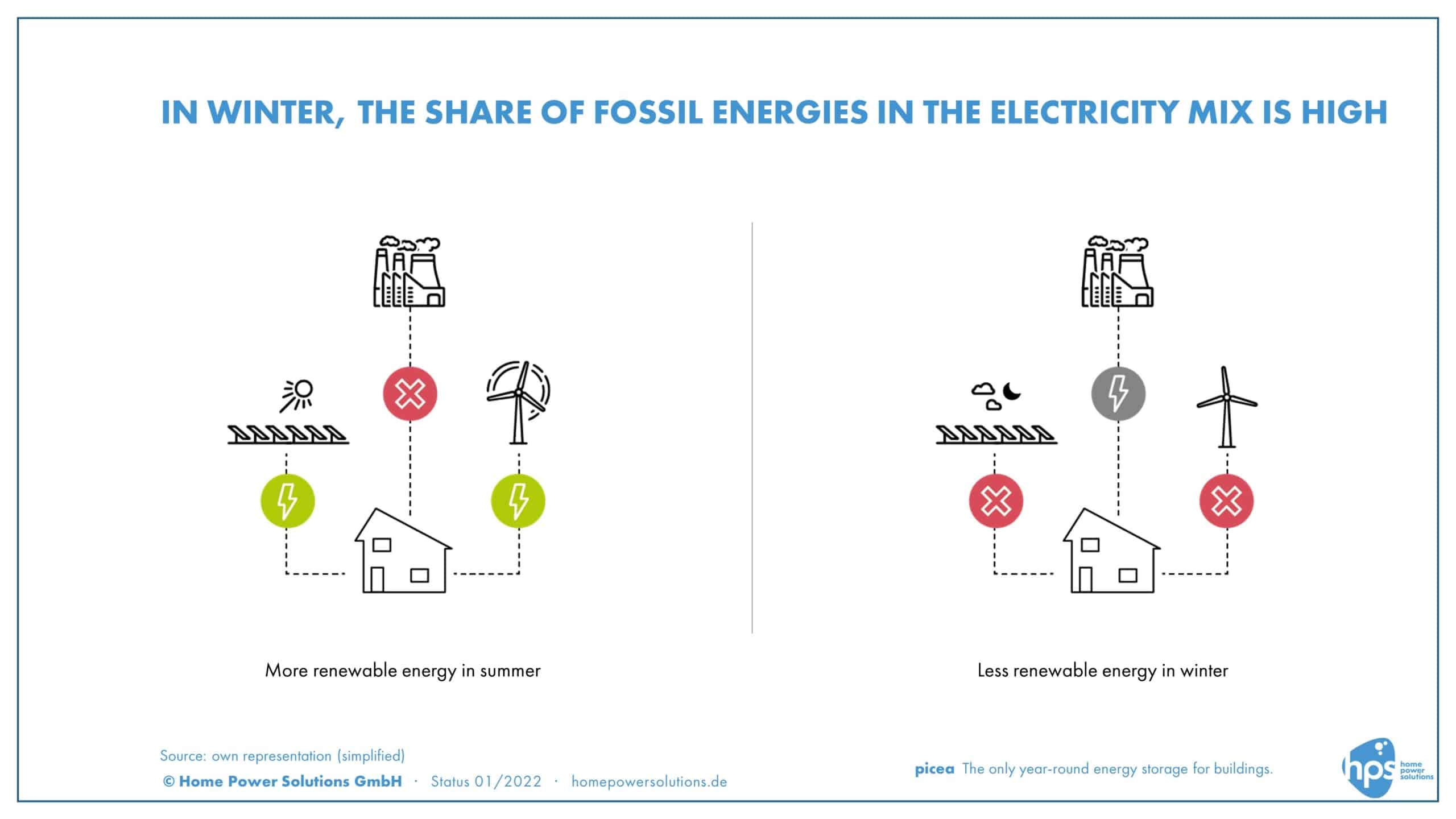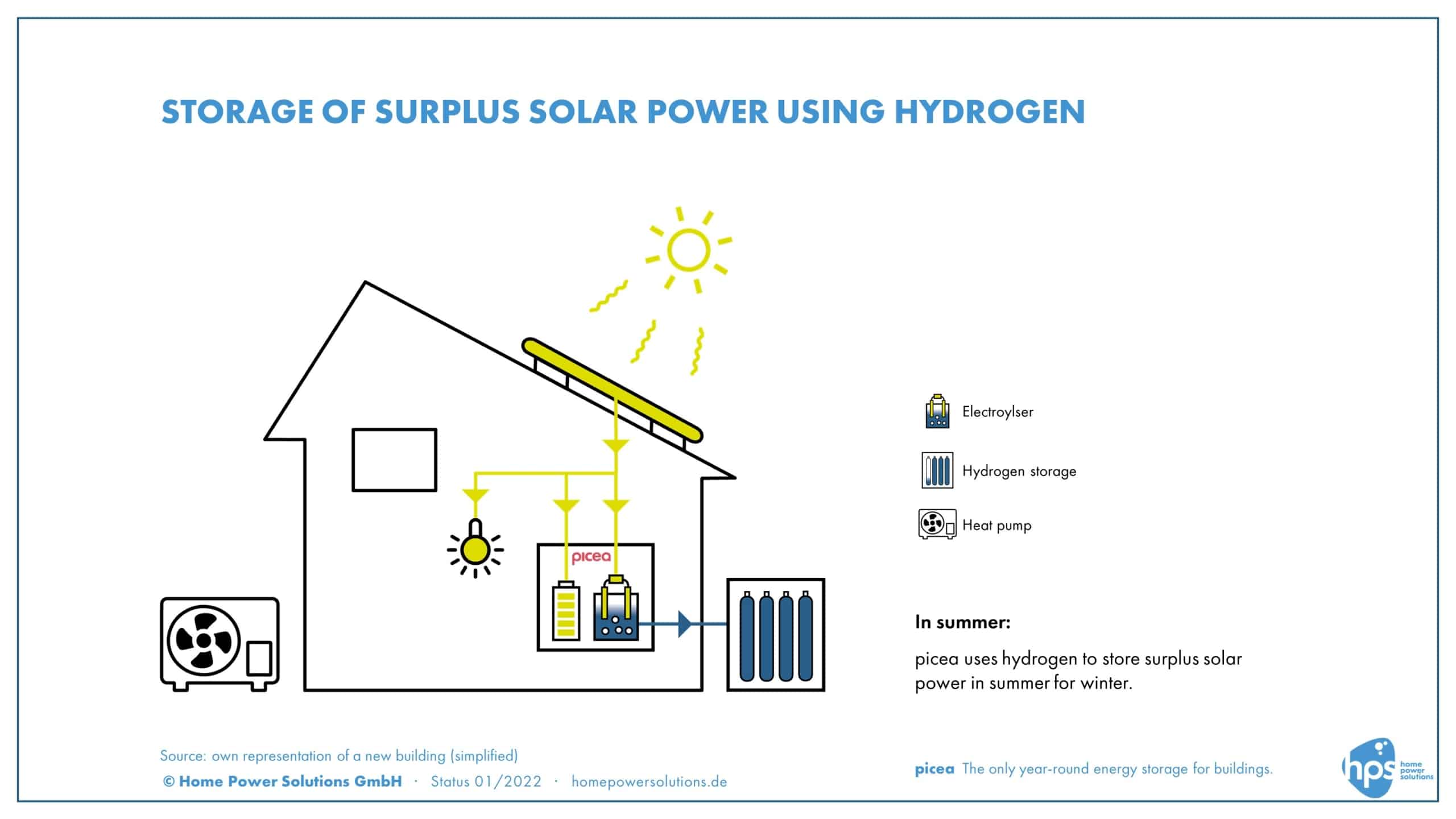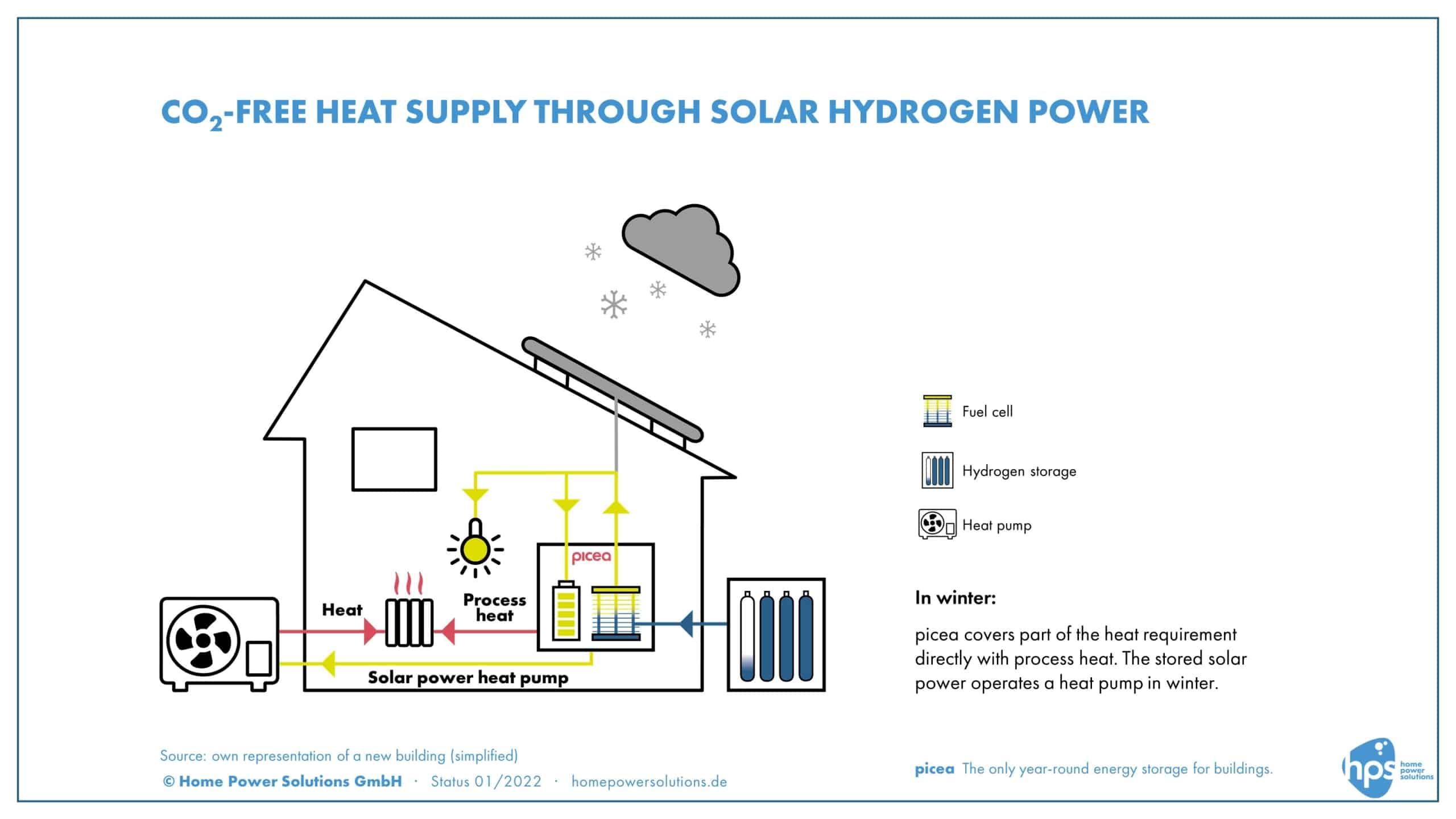Heating in winter exclusively with rooftop solar power – combining picea year-round electricity storage, a heat pump and solar system makes it possible
Almost a fifth of all carbon emissions in Germany are generated by building heating. The German government has therefore announced that, from 2025, every newly installed heating system is to be powered by at least 65 percent renewable energy. By 2030, 50 percent of heat generation must be climate neutral. This means that the building sector has a huge amount of work to do. There are currently very few solutions on the market capable of meeting these targets. One exception to this is picea, the world’s first year-round electricity storage system for buildings, which works with a heat pump and solar system to generate heating from renewable energy and thus avoid carbon emissions.
“There is no comparable electricity-powered heating solution for existing and new buildings on the market that can compete in terms of energy independence and carbon reduction,”
says Zeyad Abul-Ella, co-founder and managing director of HPS Home Power Solutions AG.
“With our picea year-round electricity storage system, surplus solar electricity from the summer can be stored and used to operate a heat pump in the winter. For the first time, therefore, it is possible to heat new buildings that are particularly energy-efficient entirely with renewable energy. This one solution protects the environment while at the same time shielding consumers from rising energy prices and increasing their security of supply.”
Mains-powered heat pumps produce carbon emissions
The German government wants to reduce carbon emissions from buildings and is providing significant financial support to encourage people to install heat pumps. As a result, the heat pump is now the most commonly installed heating system in new buildings in Germany. Since a heat pump uses electricity to absorb heat from the outside air, it is the most efficient heating system for new buildings and well-insulated building stock and is itself emission-free. However, particularly in winter when the heat pump requires much more electricity, the fossil energy share in the German electricity mix is very high. In November 2021, for example, environmentally harmful energy sources accounted for around 66 percent of the electricity mix. Not only that, but the electrification of heat is drawing more and more energy from the electricity grid. Because these effectively emission-free heat pumps are self-contained power systems, they help to free up the public grid by supplying energy locally.

How a picea system works with a heat pump and solar array
The picea year-round electricity storage system stores surplus solar electricity from the summer in the form of hydrogen for the winter. When winter comes, the hydrogen is made available to the building as electricity and heat. picea supplies the electricity for the heat pump. It also makes use of process heat to cover part of the heat requirement directly, which helps to reduce the overall heating energy consumption.


The combined heat pump and picea solution offers emission-free heat for existing and new buildings
Existing buildings: Many existing buildings have high energy consumption. The combination of picea, heat pump and solar system maximizes the share of renewable energy used to heat these buildings. The remaining heat requirement is covered by the heat pump using mains electricity.
New builds: Because most new buildings are well insulated, their energy consumption is low. The combination of picea, heat pump and solar system can supply the entire heat requirements of a modern house with a zero-carbon footprint.
“The dream team of picea year-round electricity storage, heat pump and solar system, which has already proven itself in a number of buildings, is a great opportunity to make the switch to renewable heating,” says Abul-Ella. “Here at HPS, we are delighted to be able to offer our customers picea as an efficient solution for closing the solar power gap in winter. This is an important contribution to achieving climate targets with innovative technology from Germany.”
About picea
picea is the world’s first commercially available hydrogen-based electricity storage system for buildings. The surplus energy generated by the photovoltaic system on sunny days is stored as green hydrogen and used in the dark season to supply electricity and heat. picea enables a CO2-free full supply of energy all year round and reduces heating costs. Per year, a picea system avoids about three tons of CO2 emissions and this is equivalent to the amount that 130 spruce trees capture annually. picea has received several prestigious awards, most recently the Handelsblatt Energy Award, the smarter E Award and the Berlin-Brandenburg Innovation Award.
About HPS Home Power Solutions
HPS develops and produces integrated systems for the storage and use of solar energy based on green hydrogen for individual homes, multi-occupancy buildings and commercial properties. The Berlin-based company was founded in 2014 by Zeyad Abul-Ella and Dr. Henrik Colell and stands for reliability, independence, and sustainability in decentralized power supply. For more information, visit:
www.homepowersolutions.de/en
Nils Boenigk (Public Affairs & Public Relations)
Phone: +49 30 235914-704
Email: nbo@homepowersolutions.de

